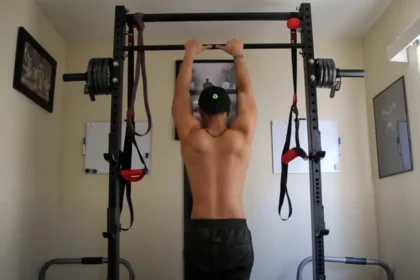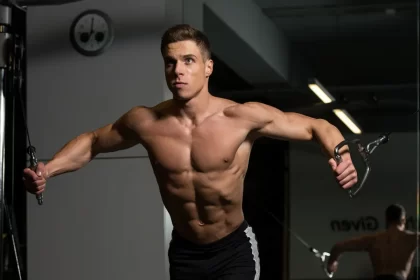When we think of Montessori education, images of children engrossed in hands-on, independent learning activities often come to mind. But what about balance beams? Are these seemingly traditional pieces of equipment also a part of the Montessori philosophy?
Read on as we’ll explore the connection between balance beams and Montessori education, and uncover their potential as holistic learning tools for children.
Contents
Introduction to Montessori Education Principles
Developed in the early 20th century by Maria Montessori, an Italian physician, Montessori education is a holistic approach grounded in the belief that learning is a natural, self-directed process unique to each child. Key components include:
Child-Centered Learning: Montessori classrooms cater to individual learning styles and paces, offering a sharp contrast to traditional classrooms where instruction is typically teacher-led. In Montessori settings, children are encouraged to select activities from a range of options, fostering independence and enhancing decision-making skills.
Prepared Environment: A cornerstone of Montessori education is the “prepared environment”—a thoughtfully arranged space designed to encourage safe exploration and learning. Everything, from furniture to learning materials, is scaled to the child’s size, promoting order and helping children gain mastery over their surroundings.
Sensitive Periods: Dr. Montessori identified optimal times for learning specific skills, such as language acquisition or physical coordination. Montessori education leverages these sensitive periods by providing tailored materials and activities that align with these natural developmental phases.
Hands-On Learning: This approach emphasizes active engagement, where children interact with physical materials that not only convey academic knowledge but also teach practical life skills. Activities like using real tools for food preparation or learning to tie shoes early on help develop fine motor skills and independence.
Respect for the Child: Montessori educators are trained to deeply respect each child as an individual. This respect is evident as teachers observe and guide rather than direct, fostering an environment where children learn to interact cooperatively and respectfully with one another.
Are Balance Beams Considered Essential In Montessori Education?
Balance beams are integral to early childhood education, particularly within the Montessori framework which prioritizes the holistic development of children—spanning physical, cognitive, and social-emotional growth.
In Montessori education, physical development is emphasized as vital, highlighting the interconnection between movement and cognitive learning. Educational materials in this approach often engage multiple senses, including kinesthetic movement, to enhance learning and retention.
While not a traditional Montessori tool like the pink tower or sandpaper letters, balance beams are commonly incorporated into the physical education curriculum of many Montessori schools.
Designed with safety in mind, these beams are usually low to the ground and crafted from child-friendly materials such as foam or wood with soft padding. They come in various lengths and heights, tailored to accommodate different ages and skill levels of children.
Balance Beam Activities in Montessori vs. Traditional Settings
Balance beams, a common tool in both physical education and gymnastics, are used differently in Montessori schools compared to traditional educational settings. Here’s a detailed comparison of how balance beams are utilized in Montessori and traditional educational environments.
Traditional Use of Balance Beams
In a conventional educational or gymnastic setting, balance beams are used primarily as athletic equipment. The objective is to develop specific physical skills:
- Enhancing physical balance and coordination: Athletes practice routines that require precision, balance, and control.
- Competitive training: In gymnastics, balance beams are used for competitive training, where athletes learn routines that they perform in competitions.
- Building physical strength and flexibility: Regular practice on balance beams helps in improving muscle strength, especially in the core, and enhances flexibility.
Montessori Use of Balance Beams
In Montessori schools, the use of balance beams may not be as prevalent as in traditional sports settings, but when they are used, they align with the Montessori philosophy of holistic development.
- Supporting overall development: Montessori uses balance beams more for developmental than competitive purposes. The focus is on aiding the child’s overall growth — physical, cognitive, and emotional.
- Encouraging self-directed play: Montessori philosophy encourages children to explore and learn at their own pace. A balance beam in a Montessori setting would typically be used as one of many tools for children to choose from, promoting self-directed, exploratory play.
- Integrating sensory learning experiences: Montessori education emphasizes sensory learning, and balance beams can be used to enhance proprioceptive (body awareness) and vestibular (balance) sensory experiences.
Educational Impact
Traditional environments may see the balance beam as a tool for achieving specific physical goals and milestones, typical of a sports training program. It’s about mastering a set of defined skills within a structured environment.
Montessori environments, however, might integrate a balance beam into a broader educational framework:
- Holistic skill development: While physical skills are certainly honed, the use of a balance beam in a Montessori setting might also aim to bolster confidence, concentration, and even social skills as children take turns, watch, and learn from each other.
- Adaptable to individual needs: In Montessori settings, the balance beam would be adapted to meet various developmental stages, ensuring that it is a tool that supports rather than challenges the child’s current capabilities.
Ultimately, the Montessori use of balance beams diverges significantly from their traditional use. Where traditional methods focus on athletic development and competition, Montessori views balance beams as enriching a child’s comprehensive development.
Integrating Balance Beams with Other Montessori Activities
Integrating balance beams with other Montessori activities can create a comprehensive, holistic learning experience that enhances various developmental aspects of a child. Here are some ideas on how you can blend balance beam activities with other Montessori practices:
1. Practical Life Skills
- Task Sequencing: Have children perform a series of tasks that include walking on the balance beam. For example, carrying a tray of objects across the beam safely can teach balance and careful movement, mimicking the care needed in daily activities.
- Outdoor Chores: Integrate the balance beam into outdoor play by setting up scenarios where children have to cross the beam to complete tasks like watering plants or collecting natural items.
2. Sensorial Activities
- Texture Walking: Cover parts of the balance beam with different textures (smooth, rough, soft, bumpy) and have the children walk barefoot. This activity stimulates sensory pathways and encourages children to describe their sensory experiences.
- Visual Discrimination: Place color markers along the beam and ask children to step only on certain colors, enhancing their ability to recognize and respond to visual cues.
3. Mathematics
- Counting Steps: Children can practice counting by numbering the steps they take on the beam. This can also include simple addition or subtraction, such as asking them to take two steps forward and one step back.
- Measuring Distance: Use the balance beam to teach concepts of length and distance. Children can measure how far they can walk on the beam or compare distances covered by different peers.
4. Language Development
- Following Directions: Use the balance beam to reinforce the understanding of prepositions and directions. Instructions like “walk to the middle of the beam and stop” or “walk backwards to the end” help build vocabulary and comprehension.
- Storytelling and Movement: Encourage children to act out stories or scenarios while using the beam, such as pretending to be a tightrope walker in a circus.
5. Art and Music
- Rhythmic Walking: Play different rhythms with music, and have the children walk along the beam to the beat. This helps integrate physical movement with auditory processing.
- Drawing in Motion: Set up a long roll of paper alongside the beam and allow children to draw or paint while maintaining their balance, creating a dynamic art piece.
6. Science and Nature Exploration
- Observation Skills: Use the beam for observation games, like spotting birds or plants from the vantage point of the beam, which can be slightly raised.
- Balance and Gravity: Discuss and experiment with concepts of balance and gravity while children are on the beam, relating them to scientific principles.
Final Thought
Are balance beams Montessori? When integrated thoughtfully and safely, balance beams can indeed be a part of Montessori education. They support the development of motor skills, enhance concentration, and provide important sensory experiences, all within the Montessori framework of encouraging holistic development through freedom within limits.




